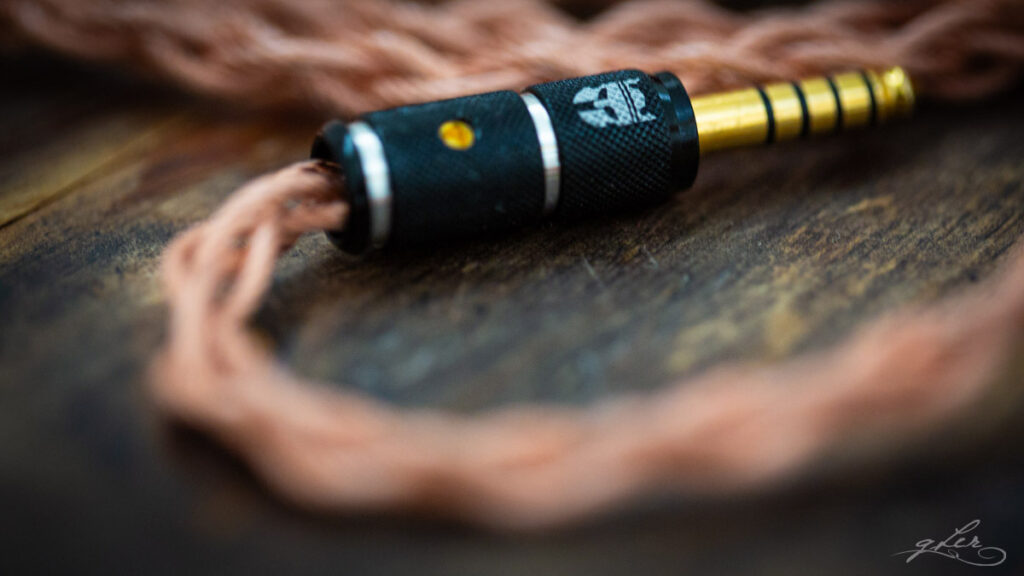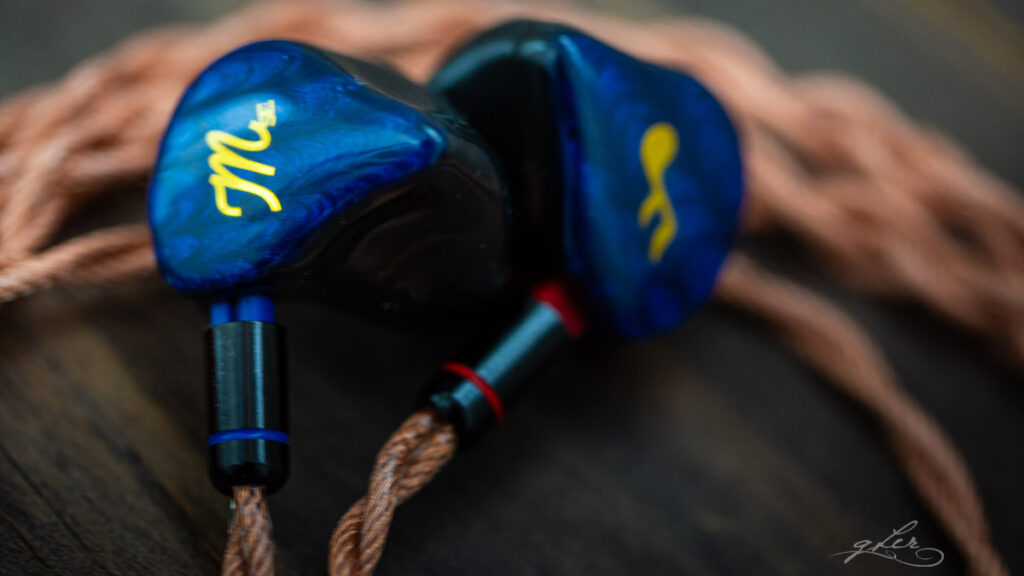I’d like to thank Antonio for supplying us with a sample of Fusione Harmony for this review. The opinions expressed herein are entirely my own.
If, like me, you’ve never heard of a cable maker called Gladiator, take a number. This one-man operation, headed up by the affable and approachable Italian-living-in-Cyprus, Antonio, was recently brought to my attention by several enthusiasts I converse with regularly on various forums.
A quick Google search, and I soon discovered Antonio has built himself a little empire of cable products, for both headphones and IEMs, with some interesting twists on traditional cable making.
For one, it seems that Gladiator was founded out of need more than want; a need to build high-quality cables that don’t cost the Earth. I can definitely relate to that, as anyone who’s read my recent cable articles can attest. That said, there’s cheap, and there’s good value, and it’s a fine line between the two. More on this later.
At the very least, it seems that Gladiator Cables has a solid reputation, backed up by a very knowledgeable maker. I also appreciate how, on initially chatting with Antonio, he wanted to know my sonic goals for a cable before making suggestions on the most suitable product. As it turns out, the cable he sent me, Fusione Harmony, comes fairly close to what I was looking for.
Packaging, design and build quality
I’m not sure if Gladiator has retail packaging for its cables, but mine was delivered in a nondescript brown padded envelope. No frills, no fuss. That makes sense, considering the $180 Fusione Harmony is a performance cable built to a very aggressive price, so there’s no room for fancy.
The cable itself is a well-specked:
- 4 cores of 20awg Japanese OCC copper and OCC silver
- Medical-grade silicone insulation
- Type 4 Litz (170 x 0.08mm)
- Ultra-low capacitance

Gladiator offers a variety of hardware options, the most striking of which is a miniature gladiator helmet, available in three different colours. Unfortunately my cable was made with a much simpler three-ring carbon splitter, a gold-plated copper 4.4mm balanced plug, and black anodised 2-pin gold-plated connectors (I say unfortunately only because I really wanted to see one of those tiny helmet splitters in the flesh).
At first sight this is a fairly substantial cable, as the 20awg spec would suggest. I note that Fusione Harmony is listed under Gladiator’s headphone cables, which is another indication that it may be too thick for many IEM users, although I find it more flexible and not nearly as unwieldly as some IEMs cables I’ve used before myself.
The copper-hued wires are clearly visible under the transparent sheathing, which is silky soft, not at all microphonic, and very pliable to the touch. It’s also very light, so there’s no issues with the cable pulling IEMs out your ears.
The one thing missing: ear guides. I know some people prefer cables without them, but I find ear guides both practical and useful in making it easy to orientate the 2-pin connector. This is especially true with Gladiator cables, since Antonio uses the ‘Japanese’ wiring style with the groove on the connector head facing inward rather than outward.
Overall, this looks and feels like a very well-made, substantial cable, despite the lack of any sort of packaging and accessories (other than a small leather clasp).

Sound impressions
Cables don’t have a ‘sound’, but they can and do affect the sound of the audio chain in different ways. Fusione Harmony is one of those cables where the changes it makes are immediately audible. Tonally, it strikes me as slightly V-shaped, with a big, meaty low-end emphasis, neutrality through the mids, and a clarity lift up top.
The bass elevation is the first and most obvious characteristic here. Connected to my (admittedly bass-first) IEMs, I hear an obvious thickening of bass notes, with greater impact and rumble down low. There’s not too much bloat from added midbass, so I wouldn’t hesitate recommending it for already-midbassy IEMs.
Mids are not recessed as such, but do take a step back compared to bass and treble. This is mitigated somewhat by the flattish staging and layering (see below), so tracks that might sound vocally distant with more expansive cables don’t sound that way here. There’s a tinge of emphasis on female vocals, however, given the clarity and lift in the treble.
While I find Fusione Harmony very pleasant tonally, it’s less impressive technically. Staging is fairly flat, so different layers in the music tend to come at you all at once. That’s not to say staging is overly compressed; big-stage IEMs will still sound big, but the distance between sounds and instruments, both closer and more distant, is notably reduced compared to more spacious cables.
This could, of course, be a pro or a con, depending on how you like your music presented. Resolution, while not top-tier, is very good, as is speed and dynamics, and the cable gives off a very lively, energetic feel to most of the IEMs I’ve paired it with.

Select pairings
FatFreq Maestro SE (reviewed here). This is one of my favourite pairings with MSE. The added bass weight doesn’t overshoot MSE’s already monstrous sub-bass elevation, but rather adds some heft and punch to its midbass. Vocals don’t sound any more or less recessed, though treble gets a comfortable lift, which can either open up the upper treble a touch, or make it slightly zingy for those who are more sensitive to it.
FIR Audio Xenon 6 (reviewed here). Another good pairing, although I don’t think the cable makes the most of Xe6’s exceptional staging. It’s also maybe not quite the right fit for such a bassy IEM, though paired with the red or black modules, Xe6 still sounds relatively balanced despite its inherent thickness.
FIR Audio Radon 6 (reviewed here). Very much a fun pairing for those brave enough to pair a $180 cable with a $3200 IEM. That said, the stock Rn6 cable, which is itself made of similar if not identical materials, is an excellent, high-performing cable at around the same price point. Fusione Harmony adds some added bass weight and punch to an already world-class bass presentation, but the treble lift won’t work for everyone, and the flatter staging isn’t ideal.

Closing thoughts
I said at the start of this review that there’s a fine line between cheap and good value. Thankfully, Gladiartor’s Fusione Harmony is very much the latter. This is a well-made, lovingly-crafted cable, with excellent materials and workmanship, comfortable on ear, with a very distinct sound that will please many and pair nicely with significantly more expensive IEMs.
Is it going to challenge ultra-expensive cables when it comes to pure performance? Of course not, at least not in my opinion, but it’s not letting you down quality-wise either, especially for those using IEMs in and around its price bracket.
Considering the cost of high-performance third-party cables today, it’s refreshing to know there are still some skilled artisans making bespoke cables that blend quality with cost-effectiveness. I would far sooner contact Antonio for a custom cable than opt for one of the hundreds of cheap Chinese knock-offs on AliExpress and other mass-market sources.
I’m hopeful this is the first of many positive encounters with Gladiator, and wish Antonio much luck and great success with his venture.




2 Responses
The packing was sufficient for protection. Wanted to try some cable, but i was worried about that. i heard there were issues in the past with shipping.
No problem at all with shipping. Just make sure you ask for express courier shipping and you’ll be fine.